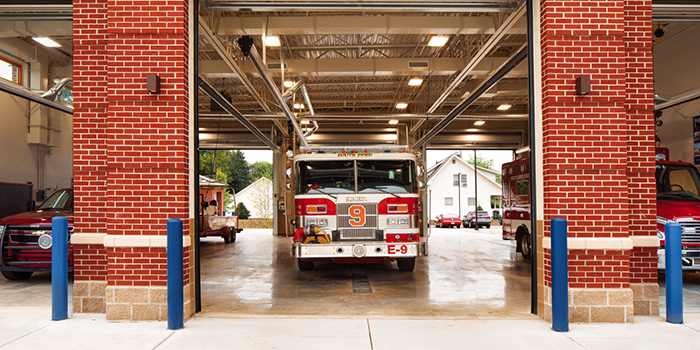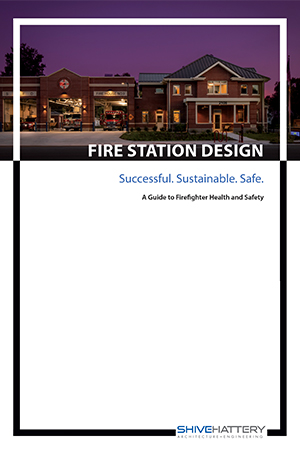
There are several high-risk elements that fire departments have in their stations that may increase unnecessary exposure to toxic contaminants and carcinogens. Our team has developed five best practices to help you decrease this exposure.
- Remove food and beverages from the apparatus bay.
One common concern is the storage of food/beverage vending machines and ice machines in apparatus bays. These bays are highly contaminated. Contaminants are deposited onto various surfaces and released into the air which may come into contact with food, beverages and ice that are later ingested.
- Remove exercise equipment from the apparatus bay.
Another common factor is the storage and use of exercise equipment in the apparatus bay. Contaminants from apparatus and firefighting equipment are off-gassed and contaminate surfaces of the equipment. These contaminants come into direct contact with the skin when the equipment is used, and can be absorbed into the body (often at an accelerated rate because of increased body temperature).
- Store turnout gear properly and wash turnout gear regularly.
Gear is often improperly stored, which increases the opportunities for crew members to have unnecessary exposure to these contaminants. Storing turnout gear on the floor of the apparatus bay allows toxins and carcinogens to come into contact with the interior of the gear, which then comes into contact with skin when the gear is worn. Additionally, crew members may also store their contaminated gear in apparatus cabs, which contaminate the interior of the cab itself. Gear should be stored properly and washed often in order to decrease exposure.
- Avoid wearing gear into the living spaces of the fire station including boots.
When crew members wear their gear inside the living spaces, this tracks toxins into spaces where crew members spend a lot of their time.
- Install smoke-seal gaskets around door systems from the apparatus bay into living spaces.
One way to prevent cross-contamination from the apparatus bay into the living quarters is to install smoke-seal gaskets around doors that lead into these living areas. This will prevent diesel and off-gas from apparatus and gear from making its way into the common “safe zones.”
Successful. Sustainable. Safe.
Sign up to download the Fire Station Design Book. A research-driven guide to designing fire stations that are both functional and prioritize the health of first responders.

